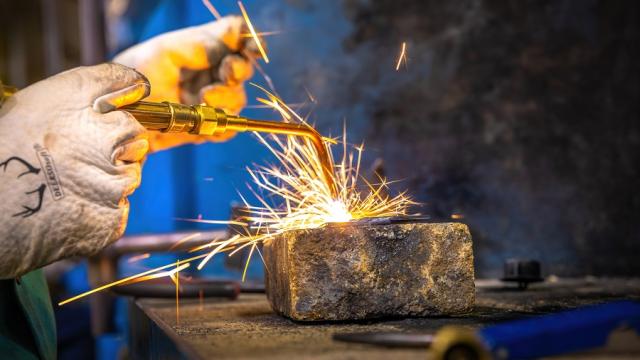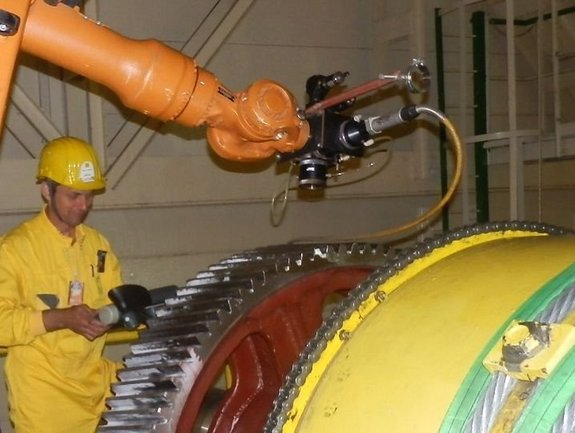Usual Welding Repair Work Issues and Exactly How to Address Them Successfully
Welding repair services often experience a series of problems that can endanger the honesty of the last product. Typical problems include insufficient infiltration, porosity, and misalignment, amongst others. Each problem provides unique challenges that need details methods for resolution. Comprehending these concerns is necessary for welders intending to improve their results and abilities. This discussion will certainly discover these common welding repair issues and effective techniques to address them.
Poor Penetration
Insufficient infiltration happens when the weld steel falls short to totally fuse with the base product, resulting in weak joints and prospective architectural failings. This concern commonly comes from insufficient heat input, incorrect electrode angle, or improper welding rate. Welders may come across inadequate penetration because of a mistake of the needed criteria for a particular product density or kind. Additionally, contamination on the base product's surface area can hinder reliable bonding, worsening the issue. To attend to poor penetration, welders ought to assure appropriate settings on their devices and maintain a clean work surface. Routine inspection of welds is advised to identify any shortages early, permitting timely corrections and the prevention of jeopardized structural stability in bonded assemblies.
Porosity
Porosity is a common issue in bonded joints that manifests as small gas bubbles caught within the weld steel. This defect can endanger the stability of the weld, leading to minimized toughness and potential failing under anxiety. Montana Mobile Welding and Repair Belgrade Welding. Porosity commonly develops from contamination, wetness, or improper welding strategies, which permit gases to run away right into the liquified weld swimming pool. To address porosity, welders need to ensure appropriate surface area preparation, maintain a tidy workplace, and make use of suitable welding specifications. Furthermore, choosing the ideal filler product and protecting gas can alleviate gas entrapment. Normal examination and testing of welds can help identify porosity early, guaranteeing timely restorative actions are taken, therefore maintaining the quality and reliability of the bonded structure
Imbalance
Misalignment in welding can develop from different variables, including improper setup and thermal growth. Understanding the root causes is vital for effective resolution. Several modification techniques are available to realign components and ensure architectural honesty.
Causes of Misalignment
Welding misalignment often stems from a selection of underlying problems that can endanger structural honesty. One key reason is improper fit-up of parts before welding, which can cause voids and unequal surfaces. Variants in thermal development throughout the welding process can also lead to distortion, especially if the products being joined have different coefficients of growth. Additionally, insufficient fixturing and clamping may fall short to hold elements safely in location, leading to activity throughout welding. Badly conserved equipment, including welding equipments and tools, might present variances in the weld bead, further adding to imbalance. Ultimately, driver error, originating from not enough training or experience, can also play a significant duty in producing misaligned welds.
Correction Methods Readily Available
Dealing with misalignment properly requires a combination of corrective techniques tailored to the details concerns at hand. One common method is making use of jigs or components to hold components in the proper placement during welding, ensuring regular alignment. In addition, pre-heating the products can help in reducing distortion and enhance fit-up. For substantial misalignment, mechanical adjustment strategies, such as making use of hydraulic jacks or clamps, can be employed to remedy the setting before welding. Post-weld warm therapy may also be necessary to alleviate stresses brought on by misalignment. Finally, mindful evaluation and change throughout the setup stage can stop misalignment issues from ending up being significant problems, promoting a smoother welding process and improving general architectural stability.
Distortion
Distortion is a common obstacle in welding that can arise from different aspects, including uneven heating & cooling. Recognizing the sources of distortion is vital for applying effective prevention techniques. Addressing this problem not only boosts structural stability however also boosts the general quality of the weld.
Reasons for Distortion
When subjected to the intense warm of welding, products typically undergo adjustments that can cause distortion. This phenomenon mainly emerges from thermal expansion and tightening throughout the welding process. As the weld area heats up, the material expands; upon air conditioning, it gets, which can produce inner tensions. Furthermore, unequal heating throughout a workpiece can aggravate these anxieties, leading to bending or flexing. The sort of material additionally plays a considerable duty; metals with differing thermal conductivity and coefficients of expansion may respond in a different way, bring about unforeseeable distortions. In addition, bad joint layout and insufficient fixturing can contribute to imbalance during welding, enhancing the likelihood of distortion. Understanding these reasons is essential for reliable welding fixing and prevention techniques.
Prevention Techniques
Effective avoidance methods for distortion throughout welding focus on controlling warmth input and making sure proper joint layout. Keeping a consistent heat input aids to reduce thermal growth and contraction, which can cause distortion. Utilizing strategies such as pre-heating the work surface can also lower the temperature slope, promoting consistent heating. In addition, selecting proper joint styles, such as T-joints or lap joints, can improve stability and lower stress and anxiety focus. Executing appropriate fixturing to secure the work surfaces in position additionally help in maintaining alignment throughout the welding procedure. Lastly, staggered welding series can disperse warmth extra uniformly, stopping local distortion. By applying these techniques, welders can considerably lower the chance rf welding of distortion and improve the general quality of their welds.
Splitting
Breaking is an usual problem experienced in welding repair work, commonly arising from different aspects such as inappropriate cooling prices, product selection, or inadequate joint prep work. The occurrence of fractures can substantially jeopardize the stability of the weld, leading to potential failures during procedure. To resolve this concern, welders should first assess the origin causes, making sure that products are compatible and properly chosen for the particular application. Furthermore, managing the cooling rate during the welding process is important; quick air check my source conditioning can induce anxiety and result in breaking. Proper joint style and prep work additionally contribute to minimizing the threat. Carrying out these approaches can enhance weld quality and durability, ultimately minimizing the possibility of splitting in completed weldments.

Insufficient Blend
A substantial problem in welding repair work is incomplete fusion, which occurs when the weld steel does not adequately bond with the base product or previous weld passes - Montana Mobile Welding and Repair. This issue can result in weak points in the joint, potentially endangering the integrity of the welded framework. Aspects adding to incomplete blend consist of inadequate warmth input, incorrect welding technique, and contamination of the surface areas being joined. To resolve this problem effectively, welders should guarantee appropriate pre-weld cleansing and surface preparation, in addition to change their welding specifications to achieve sufficient penetration and blend. Regular examination during the welding process can additionally aid identify incomplete combination early, permitting prompt restorative steps to enhance the general top quality of the weld
Overheating
While welding repair services can boost architectural stability, overheating presents a significant challenge that can result in material degradation. Too much warmth during welding can modify the mechanical properties of metals, leading to decreased stamina, boosted brittleness, and warping. This phenomenon is especially important in high-stress applications where architectural integrity is vital. Determining overheating can entail visual inspections for discoloration or distortion, as well as monitoring temperature level during the welding process. To reduce the dangers linked with overheating, welders should use appropriate strategies, such as regulating warmth input, readjusting travel speed, and making use of suitable filler materials. In addition, applying pre- and post-weld warmth therapies can aid restore product properties and enhance the general high quality of the repair work, guaranteeing lasting efficiency and safety and security.
Often Asked Questions
What Are the Usual Indications of a Welding Flaw?

Exactly How Can I Test My Welds for Top quality?
To evaluate welds for quality, one can utilize visual assessments, ultrasonic screening, and radiographic methods. Each technique ensures architectural honesty, identifies defects, and verifies adherence to specified requirements, ultimately improving the dependability of the bonded joints.
What Security Safety Measures Should I Take While Welding?
When welding, one should prioritize safety and security by wearing appropriate individual safety tools, guaranteeing appropriate ventilation, safeguarding flammable materials away, preserving a clean office, and knowing environments to stop injuries and crashes.
Can I Repair a Weld Without Renovating the Entire Joint?
Repairing a weld without remodeling the entire joint is feasible, depending on the damages (Montana Mobile Welding and Repair). Methods such as grinding, including filler product, or making use of a welding process can properly attend to specific defects while preserving the surrounding structure
What Equipment Are Necessary for Effective Welding Repairs?
Important devices for effective welding repairs consist of a welding equipment, cable brush, mill, protective equipment, clamps, and filler products. Each device plays an important function in ensuring high quality and safety during the repair service process. Porosity usually occurs from contamination, wetness, or improper welding methods, which permit gases to run away right into the molten useful source weld pool. Badly kept devices, consisting of welding devices and devices, might introduce incongruities in the weld grain, more contributing to imbalance. When subjected to the extreme warm of welding, products typically go through modifications that can lead to distortion. Breaking is a common concern encountered in welding repair services, commonly resulting from various factors such as improper air conditioning rates, product option, or insufficient joint prep work. A substantial issue in welding repair services is insufficient combination, which takes place when the weld steel does not appropriately bond with the base product or previous weld passes.